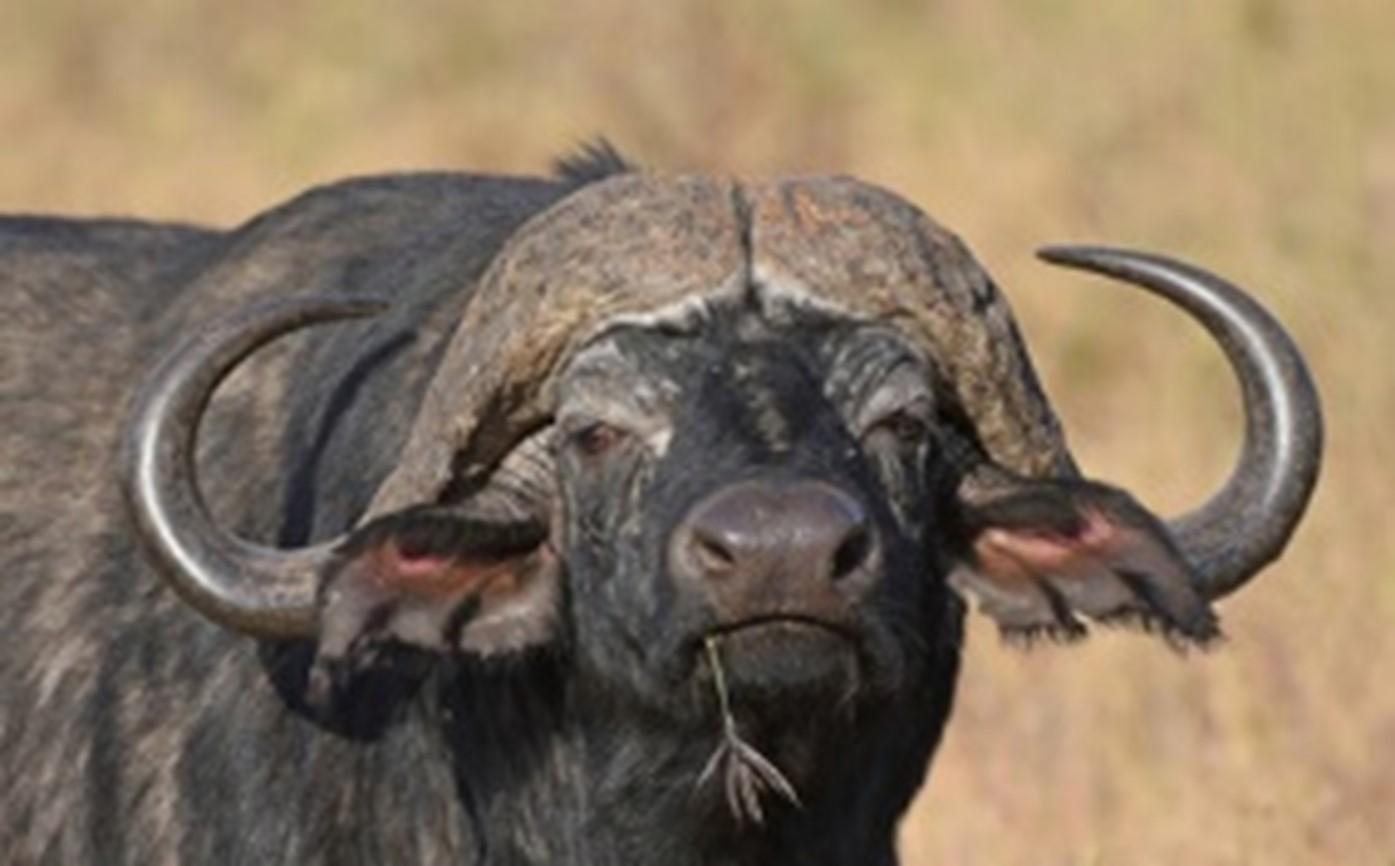Regarding hunting in Africa, the cost of a Cape buffalo hunt is generally the cheapest of your African big game. Prices, on average, range from US$4,000-US$10,000. However, exceptional trophies, which, of course, possess a higher biological value to the rancher, will do the damage of a higher-than-average price to the hunter.
In terms of horn characteristics, this is where the value of your Cape buffalo is mainly based. Although to measure Cape buffalo for Rowland Ward (updated method), we do not only use the widest width of the horns; this is still the price-determining process. The new method to determine Rowland Ward qualification includes the width of both bosses added to the widest point on the horns. The Safari Club International measurement method requires a higher value but uses the length of the horn from tip to tip with the width of the bosses.
[DYNAMIC-BLOGTABLEOFCONTENT]
This also proves difficult to judge while looking at the Cape buffalo in the field and determining whether this is your trophy bull or not! Therefore, we use the spread or width of the Cape buffalo’s horns to determine its value and quality as a trophy. Almost all Cape buffalo that reach a spread of 42” will qualify for Safari Club International and the newest measurements for Rowland Ward. Any mature bull with a spread past his ears and hard bosses makes a beautiful trophy and will always be an exhilarating hunting adventure in Africa!
General prices from a South African Outfitter determining the cost of Cape Buffalo hunting according to the spread of the horns are as follows:
- 36” = $4 000
- 40” = $6 000
- 42” = $7 000
- 45” = $10 000
- 47” = $13 000
- 48” = $26 000
- 49” = $40 000
- 50” = $52 000
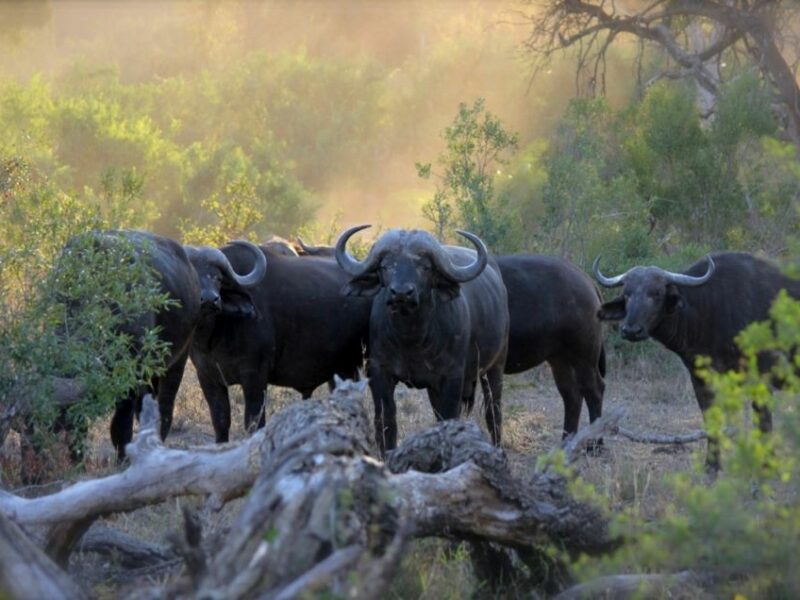
The Taxidermy Cost of Your Cape Buffalo Hunt
Taxidermy is a way of preserving your memories made on hunting safaris and having the privilege of seeing them displayed in your home. It’s a story that can speak for itself without words, just the majestic game hunting trophy. Taxidermy can be costly to some, but with this comes a beautiful product that you will forever admire and be a talking point with memories for years to come. To produce a full mount of a Cape buffalo, a hunter can generally expect to pay more than US$6,000 for an acceptable piece of work. A shoulder mount costs roughly US$2,000. These two mounts are some of the most common designs hunters will choose to display their trophies. Whether the hunter chooses to convert their trophy Cape buffalo into a form of taxidermy is their choice alone. Many hunters display their hunting trophies in trophy rooms among other hunted game, or in action poses where they are portrayed with other animals as they interact in the wild. A favorite pose for Cape Buffalo is a full mount alongside a lion. Where the lion is portrayed as attacking or hunting the buffalo, just as they would on the African savanna.
There are a vast amount of other artwork displays to portray your trophy Cape buffalo. To list a few:
- Skull mount/European mount
- Pedestal mount
- Flat skin
- Half mount
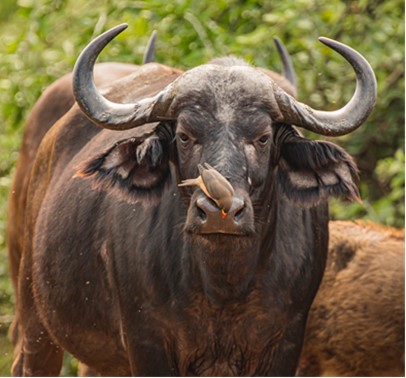
The Best Places To Hunt According To Cost of Cape Buffalo Hunt
.There are many destinations for hunting in Africa where you may find exceptional Cape buffalo trophies with experiences unlike any other. But, regarding convenience and hassle-free hunts, Limpopo, South Africa, is unmatched. Hunting in South Africa is generally a smooth operation, but Limpopo is set apart as it is the hub of hunting in South Africa.
Hunting in South Africa is also better suited for the client when compared with many other destinations solely because many areas within South Africa hunt Cape buffalo all year round. These same laws apply for plains game hunting and big five African game animals. There are many other destinations in Africa to plan your big game hunting safari; Tanzania is a majestic and vast landscape home to many game-hunting species; Cape buffalo are naturally found in the Tanzanian savannah and thickets, where they often occur in large herds of few mature males and many breeding females. Mature males can be found in small bachelor herds or often as solitary males.
Mozambique, Zimbabwe, and Botswana are excellent destinations to experience, providing an affordable cost of Cape Buffalo hunts. In many of these hunting areas and concessions, the big five African game animals roam freely between hunting areas, covering massive distances between migrations and moving through the landscape in search of resources. This hunting environment creates the experience of a free-roaming population of wildlife existing in an untamed, open-system habitat with minimal human interference or management.
Many hunters search for these remote destinations to complete their hunting safari. The conditions, however, for both hunting and living will almost certainly be more challenging than that of a natural area, which is managed more intensively, with a more developed infrastructure present.
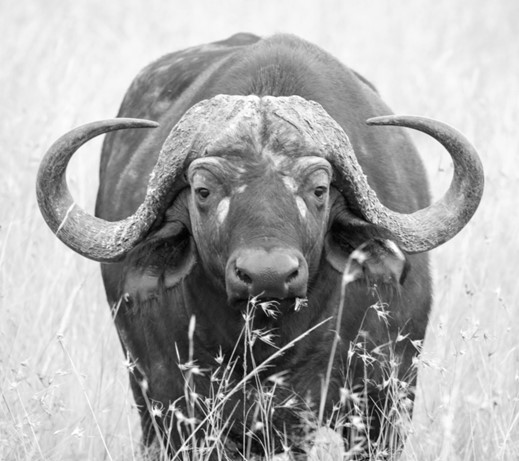
The Best Caliber For Cape Buffalo
As for the big five African game animals in general, a .375 caliber projectile is the smallest caliber that is recommended, and in many countries and areas within Africa, this is legally the smallest caliber allowed to hunt any of the African big game animals. However, do not let this factor alter your weapon choice; the .375 caliber is an excellent hunting rifle. With less recoil than all other big bore rifles as well as being a relatively light weapon, hunters often find that they shoot straighter and more consistently as a result. Uncountable quantities of Cape buffalo have been put into the dirt with a .375 caliber rifle. The projectile is generally loaded into two different caliber cartridges: Holland & Holland (H&H) or the Ruger.
The H&H is a more widespread and commonly used caliber of the two, making ammunition more available with a wider choice of bullet and ammunition types. In other opinions, other big bore calibers larger than the .375 are an excellent choice for the African big game. Such as the .416 Rigby, .458 Lott, or .470 Nitro Express. All these calibers provide slightly less recoil than the .50 caliber and larger rifles.
A double rifle provides a certain advantage of quickly taking two shots in close succession but falls short when the shooter is reloading as valuable time quickly ticks away. The bolt action rifle allows for more ammunition in the weapon than any double rifle, but on big five African game animals, time is of the essence in a dangerous situation, and the bolt action takes time to reload when your rifle is all shot out. Generally, a client should use a rifle that they are comfortable with and have experience shooting. At the end of the day, it is not how big the bullet is; it’s where you put it. Shot placement and confident shooting are the most important factors when it comes down to crunch time. This goes for any hunting in Africa, whether it be African plains game hunting, African big game, or a specialty species hunt.
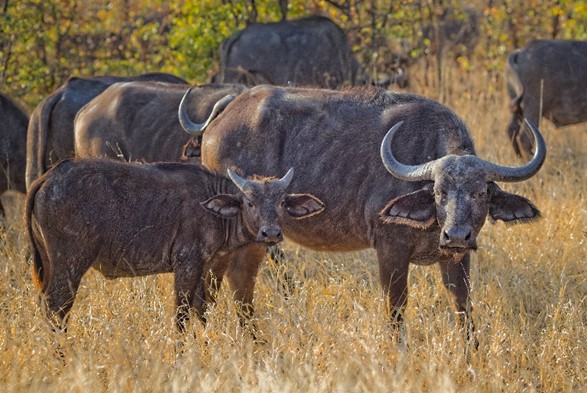
Shot Placement on a Cape Buffalo
- Shot placement is always important, especially for the African big game. Generally, a broadside shot on Cape Buffalo is always ideal, allowing for a larger target area with a lenient margin for error.
- In this position, focus on the front legs and draw an imaginary vertical line from where the leg meets the shoulder until the top of the back.
- On this vertical line, the best shot can be placed one-third of the way up on the body. This shot placement will allow your projectile to pass through the heart and lungs of the animal, causing terminal damage with one bullet.
- This is not a guaranteed kill; however, Cape buffalo are notorious for soaking up bullets into the vital area with no sign of being in a rush to die.
- Always be prepared to shoot numerous shots in close succession into your Cape buffalo, generally when the Cape buffalo is running directly away or to the side.
- Cape buffalo also have a confrontational attitude, where they often charge when wounded or feel trapped or pressured. In this case, shoot the Cape buffalo between the bosses when his head is lowered and right above and between the eyes when his head is raised.
- When the Cape buffalo is standing broadside, the average range of a shot is 50-150 yards. If you hunt with a good Professional Hunter (PH), they can put you in ranges less than ten yards.
- Firing off a shot into a fully grown bull Cape buffalo at these ranges will have your heart racing like never before. In the situation where you shoot a Cape buffalo numerous times and he still charges, trust in your PH and backup rifles to shoot as well.
- A Cape buffalo possesses a brain that is roughly a three-inch diameter circle, a tough target to hit when a Cape buffalo charges at speeds of up to thirty miles per hour.
- Once wounded, the Cape buffalo will hide in dense cover and wait for you to approach and charge. If you do not hit the brain of the animal when he charges, he will very possibly kill you.
- This is dangerous game hunting in Africa. Shoot straight!!
Accommodation During Your Cape Buffalo Hunt
- Accommodating on a big game hunting safari is generally either in a chalet, small lodge, or a tent. These different forms of accommodation can range from very basic to an extravagant and luxurious camp. The price of the accommodation will correlate with the standard of the camp and service.
- All accommodation for any hunting client, observer, camera crew member, skinner, tracker, or Professional Hunter is the responsibility of the Hunting Outfitter to organize and provide.
- This means, when booking and arranging your hunt you must explain thoroughly to your Outfitter all information regarding your travel requirements and details.
- Hunting with any Outfitter who maintains a certain level of professionalism and class, will always provide a camp set-up to best fit your requirements and household needs.
- In many African countries resources such as running water and reliable electricity are unavailable, but a correctly equipped camp will accommodate this. Whether it be means of backup generators, solar electricity, river-pumped water, or water wells, your reliable Outfitter will have planned to ensure your needs are met.

Transport on Your Cape Buffalo Hunt
- If you are traveling from an international country, such as the United States of America, you will fly into Africa, landing at a main international airport.
- From here, your Outfitter will either collect you and travel straight to the hunting area or arrange your connecting transport.
- Further transport depends on your choice of Outfitter and game hunting destination.
- In an area with a complex river or wetland system, such as the Okavango Delta, Botswana, you will likely travel via motorized boat along the channels.
- In remote areas or large concessions that are far from any developed urban areas, many clients are flown from the international airport directly to the hunting area via a small fixed-wing aircraft that usually holds a maximum of five people, excluding the pilot.
- In this situation, you will land on a small dirt runway, often on the main road for a small town that is busy with wildlife.
- Once arriving at the hunting destination, most Outfitters will use offroad vehicles customized for primarily offroad travel.
- These vehicles are also fitted with specialized equipment to load animals that have been taken down in the field and transport them to the process facilities.
- Some unique businesses use alternative methods, such as ATV dirt bikes or horses. These expeditions are designed for specific game to be hunted.
- Recovery of a monster Cape buffalo bull via horses or dirt bikes may be a little tricky, so count on a reliable offroad vehicle such as a Toyota Land Cruiser for your dream Cape buffalo hunting safari.
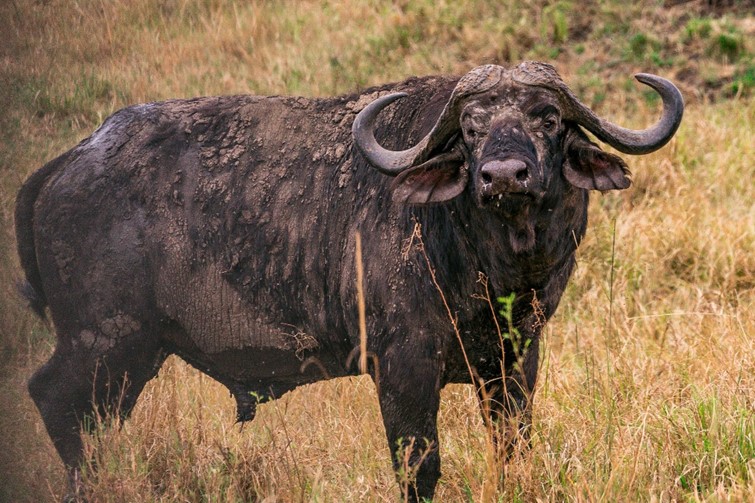
Dangerous game hunting is an exciting and challenging hunting adventure, especially when you are targeting Africa’s Black Death.
Read more about some of our team members’ personal experiences targeting this magnificent beast.
Read about buffalo hunting in Mozambique and another blog relating to a Cape buffalo hunt in Limpopo, South Africa.
Author: K.C. van Wyk
